at TA ≈ 25°C,
VOCM pin = open, RF = 1.5 kΩ, RL = 1 kΩ, VO = 2
VPP, 50-Ω input match, G = 1 V/V, PD =
VS+, single-ended input (SE-in), differential output (diff-out), and
input and output referenced to default midsupply for AC-coupled tests (unless
otherwise noted); see Figure 8-1 for a gain of 1-V/V test circuit.
 Figure 7-15 Small-Signal Frequency Response vs Gain
Figure 7-15 Small-Signal Frequency Response vs Gain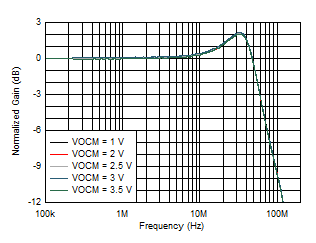 Figure 7-17 Small-Signal Frequency Response vs VOCM
Figure 7-17 Small-Signal Frequency Response vs VOCM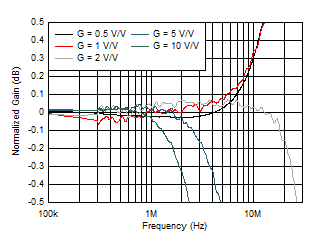 Figure 7-19 Gain Flatness vs Frequency
Figure 7-19 Gain Flatness vs Frequency Figure 7-21 Harmonic Distortion vs Frequency
Figure 7-21 Harmonic Distortion vs Frequency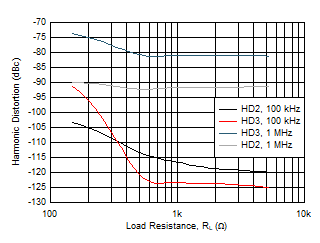
| VO = 5 VPP with RL adjusted |

| VO = 5 VPP with VOCM adjusted |

VO = 2-V step,
SE-in, diff-out: rising
SR = 325 V/µs, falling SR = 230 V/µs,
diff-in, diff-out: rising
SR = 305 V/µs, falling SR = 310 V/µs |
 Figure 7-16 Frequency Response vs VO
Figure 7-16 Frequency Response vs VO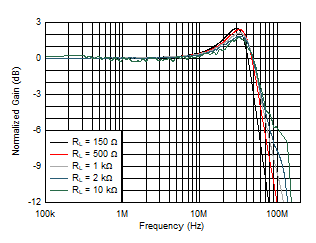 Figure 7-18 Small-Signal Frequency Response vs RL
Figure 7-18 Small-Signal Frequency Response vs RL
| 1/f corners: en = 8 Hz, in = 700 Hz |
 Figure 7-22 Harmonic Distortion vs VO
Figure 7-22 Harmonic Distortion vs VO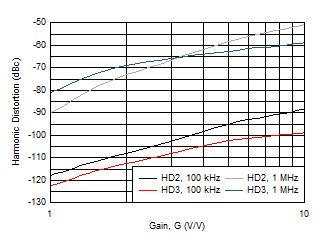 Figure 7-24 Harmonic Distortion vs Gain
Figure 7-24 Harmonic Distortion vs Gain
| VO = 2 VPP per tone, ±50-kHz tone spacing |

| VS = 5 V, VOCM at midsupply, average of 30 units |
|


 Figure 7-21 Harmonic Distortion vs Frequency
Figure 7-21 Harmonic Distortion vs Frequency



 Figure 7-22 Harmonic Distortion vs VO
Figure 7-22 Harmonic Distortion vs VO




